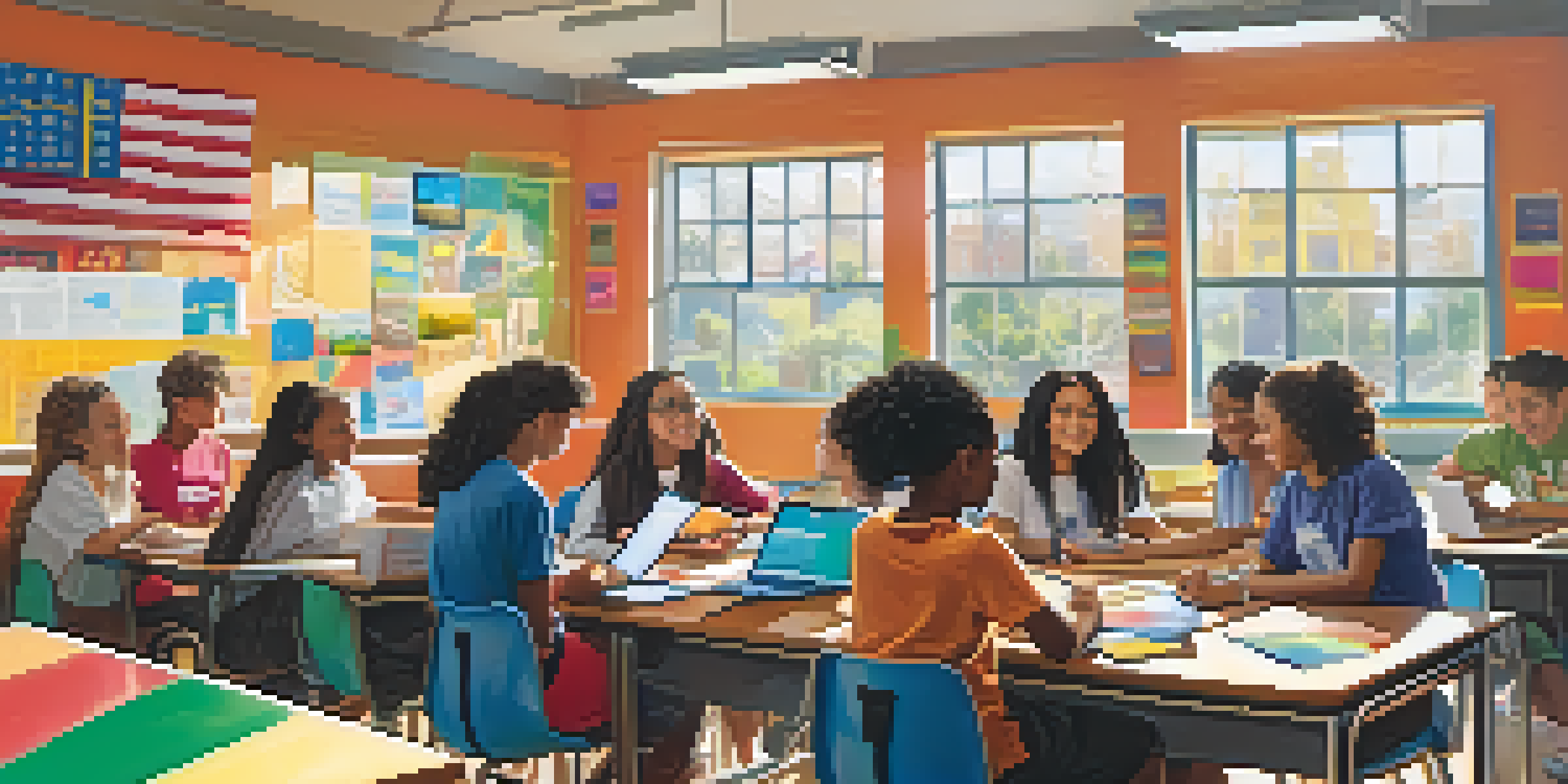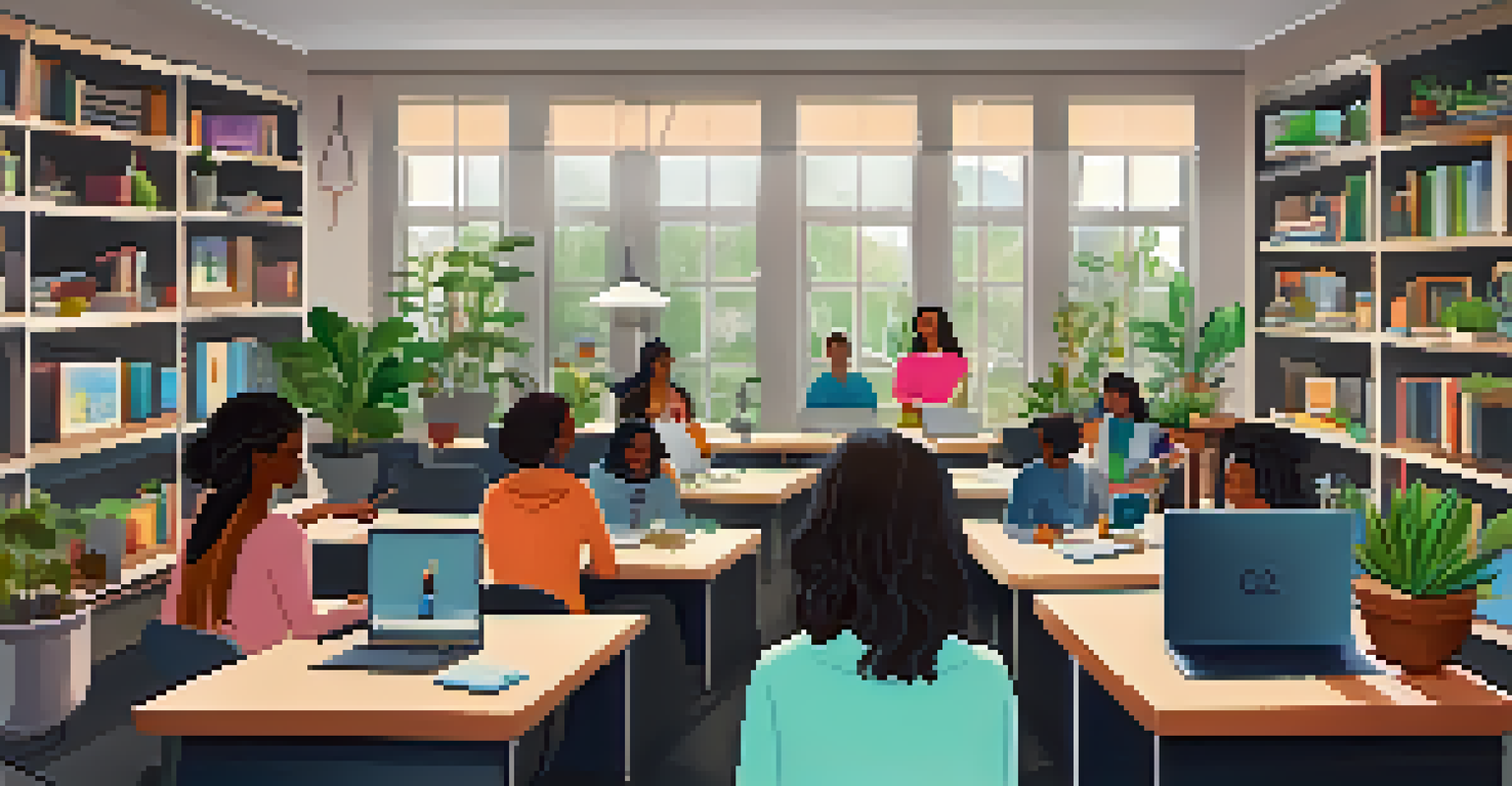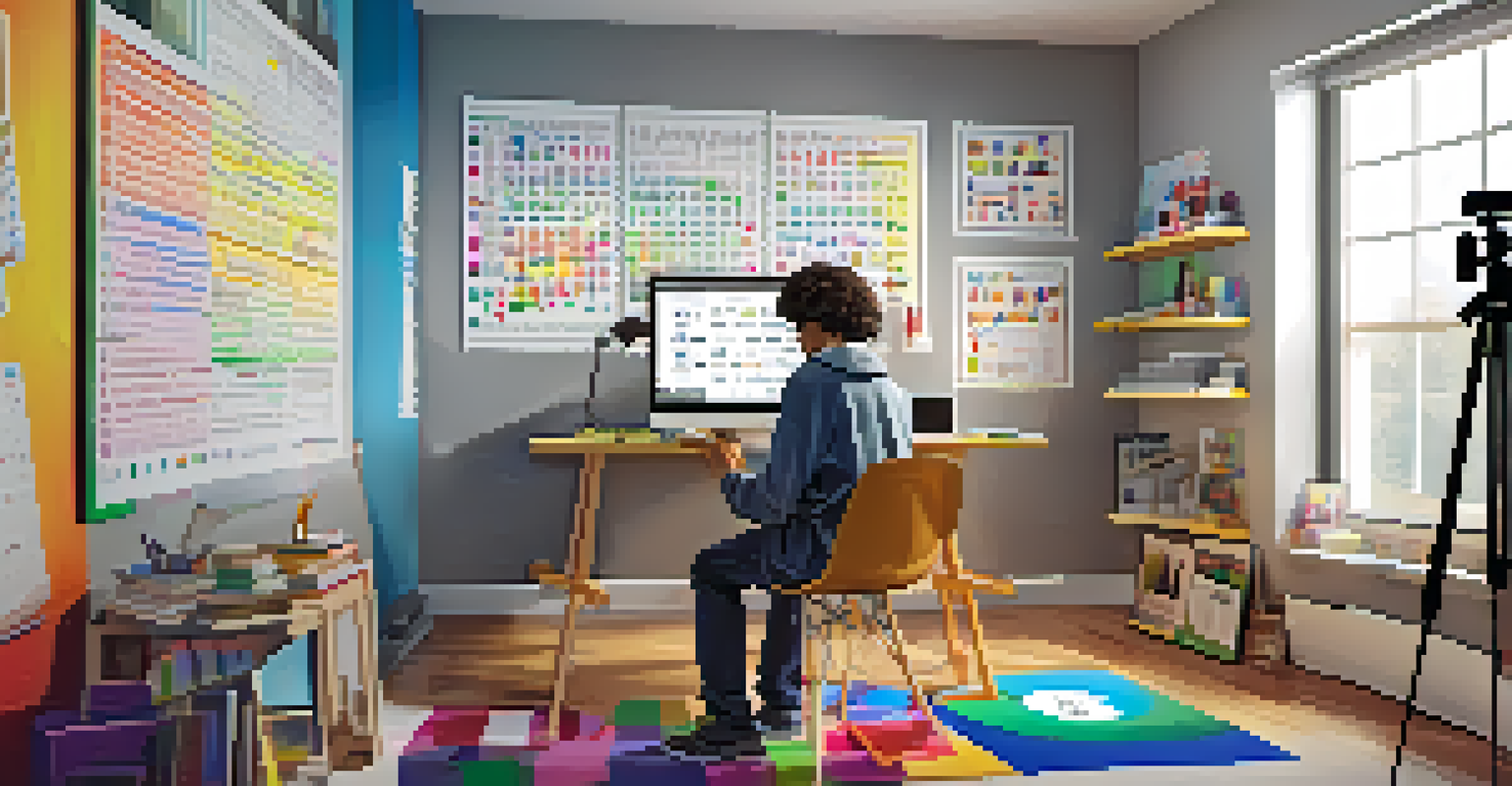The Future of Social Media in Education: Trends and Predictions

The Role of Social Media in Modern Education
Social media has transformed how we communicate and share information, and education is no exception. In classrooms around the world, platforms like Twitter, Facebook, and Instagram are becoming essential tools for teaching and learning. They provide students and teachers with opportunities to collaborate, share resources, and engage in discussions that extend beyond traditional walls.
Social media is not just a tool. It is a way of life.
By integrating social media into the curriculum, educators can create a more interactive learning environment. For instance, students can participate in live discussions on Twitter using specific hashtags related to their subjects. This real-time interaction not only enhances understanding but also fosters a sense of community among learners.
Moreover, social media encourages students to develop digital literacy skills, which are crucial in today’s job market. As they navigate these platforms, they learn how to communicate effectively, discern credible information, and engage responsibly online, preparing them for both academic and professional success.
Personalized Learning through Social Media Platforms
One of the most exciting trends in education is the move towards personalized learning, and social media is playing a pivotal role in this shift. With the ability to tailor content and interactions based on individual student needs, educators can better support diverse learning styles. Platforms like Edmodo and Google Classroom allow teachers to customize assignments, feedback, and resources for each student.

This personalization extends to social media groups and forums where students can engage with peers who share similar interests or challenges. For example, a student struggling with math could join a dedicated Facebook group where members share tips and resources, fostering a supportive network. This approach not only enhances learning but also builds confidence in students as they take ownership of their educational journey.
Social Media Enhances Learning
Integrating social media into education fosters collaboration, engagement, and community among students and teachers.
Furthermore, the data gathered from these interactions can help educators refine their teaching strategies. By analyzing engagement and performance, teachers can identify trends and adjust their methods to better meet the needs of their students, creating a more effective learning experience.
The Influence of Influencers in Educational Spaces
In recent years, social media influencers have emerged as powerful voices in various fields, including education. Teachers and educators are increasingly turning to these influencers for inspiration, resources, and innovative teaching strategies. Platforms like Instagram and TikTok have seen educational influencers share bite-sized content that makes learning fun and accessible.
The ability to connect and collaborate with others is the greatest gift of social media.
These influencers often provide fresh perspectives on complex topics, making them relatable to students. For instance, a science teacher might follow a popular TikTok creator who demonstrates fun experiments, inspiring them to incorporate similar activities in their lessons. This not only enriches the curriculum but also keeps students engaged and excited about learning.
Moreover, collaborations between educators and influencers can lead to the creation of impactful campaigns that promote educational initiatives. By leveraging the reach of social media influencers, schools can raise awareness about important issues, such as mental health or STEM education, reaching a wider audience and fostering community involvement.
Building Communities Through Social Media
Social media has the unique ability to connect individuals across geographical boundaries, creating vibrant educational communities. Teachers, students, and parents can engage in meaningful conversations, share experiences, and collaborate on projects regardless of their location. This sense of belonging is especially vital for remote learners who may feel isolated.
For example, platforms like LinkedIn and Facebook provide spaces for educators to network, share best practices, and seek support. Online communities can foster professional development, allowing teachers to learn from one another and stay updated on the latest educational trends. Such interactions contribute to a supportive ecosystem where educators feel empowered to innovate.
Personalized Learning Opportunities
Social media platforms enable personalized learning experiences tailored to individual student needs and interests.
Additionally, students can join online clubs or groups focused on their interests, ranging from coding to creative writing. These communities provide opportunities for peer mentorship and collaboration, enabling students to learn from each other and build lasting relationships. Ultimately, social media helps to break down barriers and create inclusive educational environments.
The Rise of Educational Content Creation
As social media continues to evolve, so does the trend of content creation within educational spaces. Students and teachers alike are harnessing the power of platforms like YouTube and TikTok to share educational content, tutorials, and insights. This democratization of knowledge allows anyone with a smartphone to become an educator and share their expertise.
For instance, a high school student might create a YouTube channel dedicated to explaining complex math concepts in an engaging way. This not only reinforces their own understanding but also provides valuable resources for peers who may be struggling. Such initiatives encourage creativity and critical thinking, essential skills for the future.
Moreover, educational institutions are recognizing the value of content creation and are encouraging students to participate. By integrating projects that involve creating educational videos or blogs, schools can foster a culture of collaboration and sharing. This not only enhances learning outcomes but also prepares students for future careers in a digital world.
Addressing Challenges of Social Media in Education
While social media offers numerous benefits for education, it also presents challenges that need to be addressed. Issues such as cyberbullying, misinformation, and privacy concerns can create a toxic environment if not managed properly. Educators must be proactive in teaching students about responsible online behavior and the importance of digital citizenship.
For example, integrating lessons on recognizing credible sources and understanding privacy settings can empower students to navigate social media safely. Schools can also establish clear guidelines for online interactions, ensuring that students feel secure and supported within their digital communities. This proactive approach helps mitigate risks associated with social media use.
Building Educational Communities
Social media connects educators, students, and parents, creating supportive networks that enhance professional development and learning.
Additionally, ongoing communication with parents and guardians is essential. By involving families in discussions about social media use and its impact on education, schools can create a united front in promoting safe online practices. Together, educators and families can foster a healthy balance between the benefits and challenges of social media in learning environments.
Future Predictions: The Evolution of Social Media in Education
Looking ahead, the future of social media in education is poised for exciting developments. As technology continues to advance, we can expect to see more immersive experiences, such as virtual reality (VR) and augmented reality (AR), integrated into social media platforms. These tools will revolutionize how students learn, making concepts more tangible and engaging.
Moreover, the rise of artificial intelligence (AI) is likely to enhance personalized learning experiences further. With AI-driven algorithms, social media platforms could analyze student interactions to suggest tailored content that meets individual learning needs. This shift will not only improve engagement but also empower students to learn at their own pace.

Finally, collaboration between educational institutions and technology companies will play a crucial role in shaping the future landscape of social media in education. By working together, they can develop innovative tools and resources that enhance learning outcomes and prepare students for the challenges of tomorrow's world.